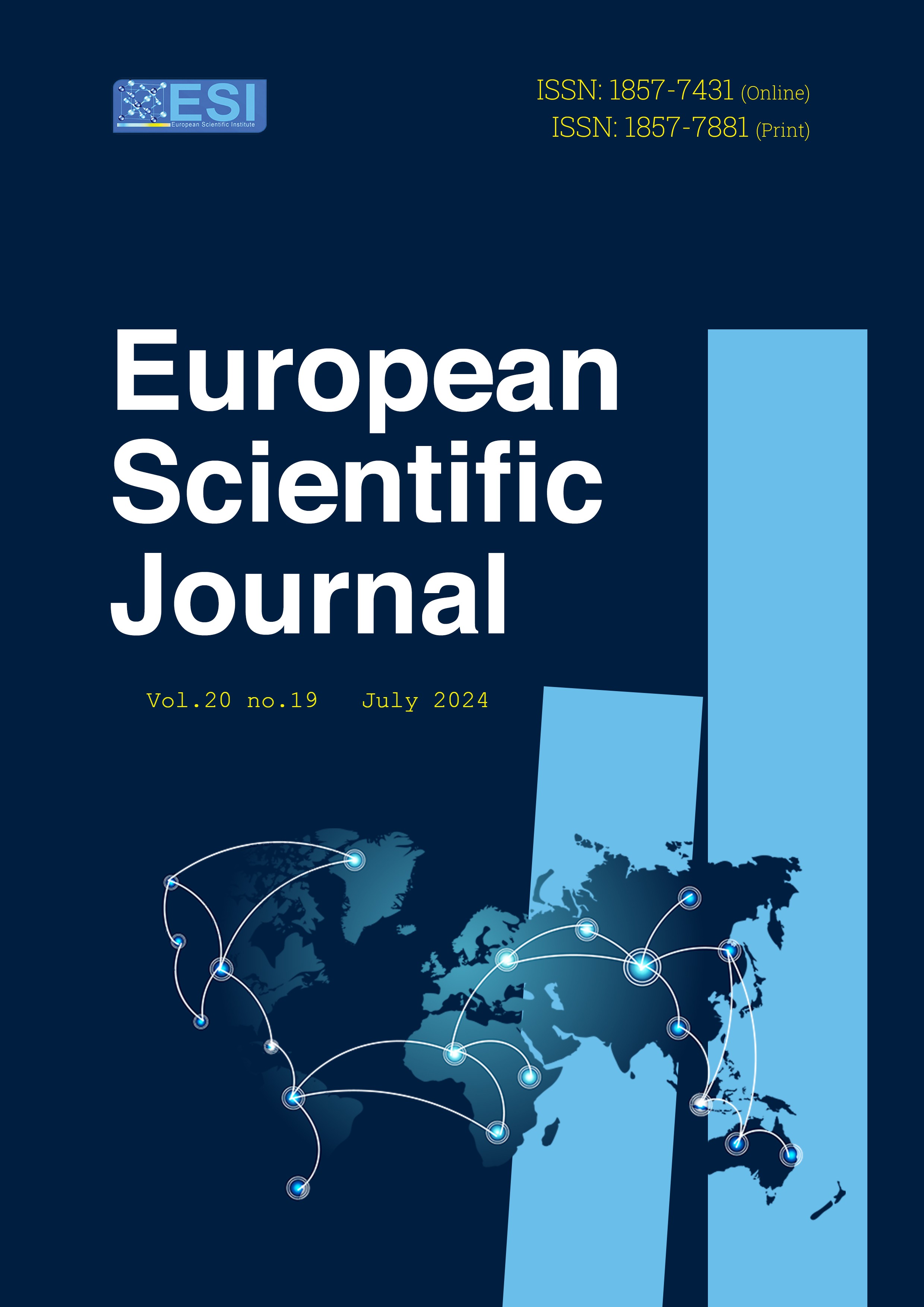Analyzing the Impact of Corporate Hedging on Enterprise Valuation: Evidence from China
Abstract
In a dynamic global financial landscape marked by unprecedented turbulence, driven notably by the COVID-19 pandemic, corporate hedging practices emerged as a critical tool for managing risks and preserving enterprise value (EV). This research investigated the intricate relationship between corporate hedging and EV, with a specific focus on Chinese-listed firms spanning the period from 2012 to 2022. Employing an extensive sample of 4,574 Chinese-listed firms, the study examines the role of corporate hedging in shaping enterprise value. The findings support the statistically significant impact of corporate hedging on enterprise. The study further tested the moderating role of ownership structure and corporate governance. The findings reveal that ownership structure and corporate governance moderate the relationship between corporate hedging and enterprise value.
Downloads
Metrics
PlumX Statistics
References
https://doi.org/10.1108/jaee-12-2018-0134
2. Antunez, M., Ramalho, N., & Marques, T. M. (2023). Context matters less than leadership in preventing unethical behavior in international business. Journal of Business Ethics, 192(2), 307–322.
https://doi.org/10.1007/s10551-023-05520-y
3. Buriro, M. H., Bhatti, A. A. & Jamali, M. A. (2023). Capital expenditure, corporate hedging and firms’ value: Evidence from the oil and gas sector of Pakistan. Journal of Development and Social Sciences, 4(2), 428-438.
https://doi.org/10.47205/jdss.2023(4-ii)38
4. Campbell, J. L., Mauler, L. M., & Pierce, S. R. (2019). A review of derivatives research in accounting and suggestions for future work. Journal of Accounting Literature, 42(1), 44–60.
https://doi.org/10.1016/j.acclit.2019.02.001
5. Campbell, J. L., Cao, S. S., Chang, H. S., & Chiorean, R. (2023). The implications of firms’ derivative usage on the frequency and usefulness of management earnings forecasts. Contemporary Accounting Research, 40(4), 2409–2445.
https://doi.org/10.1111/1911-3846.12883
6. Cardinale, R. (2021). State-Owned Enterprises’ reforms and their implications for the resilience and vulnerability of the Chinese economy: Evidence from the banking, energy and telecom sectors. Networks and Spatial Economics, 22(3), 489–514.
https://doi.org/10.1007/s11067-021-09540-x
7. Chang, Y., Fan, Y., & (Nancy) Su, L. (2024). Foreign Exchange Risk and audit pricing: Evidence from U.S. multinational corporations. Journal of Accounting and Public Policy, 45, 107196.
https://doi.org/10.1016/j.jaccpubpol.2024.107196
8. Dang, L. N., Nguyen, D. D., & Taghizadeh-Hesary, F. (2021). State-owned enterprise reform in Viet Nam: Progress and challenges. Reforming State-Owned Enterprises in Asia, 231–254.
https://doi.org/10.1007/978-981-15-8574-6_12
9. De Boer, J., Bövers, K. J., & Meyer, S. (2020). Business cycle variations in exchange rate correlations: Revisiting global currency hedging. Finance Research Letters, 33, 101195.
https://doi.org/10.1016/j.frl.2019.05.013
10. Deng, Z., & Yang, J. J. (2023). Corporate reputation and hedging activities. Accounting Finance, 63(S1), 1223–1247.
https://doi.org/10.1111/acfi.13018
11. Grima, S., Thalassinos, E. I., & Gonzi, D. R. (2020). Financial derivatives: A blessing or a curse? Emerald Publishing.
12. Guay, W. R., & Kothari, S. P. (2003). How much do firms hedge with derivatives? SSRN Electronic Journal.
https://doi.org/10.2139/ssrn.262544
13. Hendrati, M. I., Kusumawardhani, I. N., Asmara, K., Marseto, & Rusdiyanto. (2024). Strategy for Developing Planning for Post-COVID-19 SME Economic Recovery: Evidence from Indonesia. Quality - Access to Success, 25(199), 94–107.
https://doi.org/10.47750/QAS/25.199.11
14. Hull, J. C. (2022). Options, futures, and other derivatives. Pearson Education Limited.
15. Hong, L., Li, Y., Xie, K., & Yan, C. J. (2020). On the market timing of hedging: Evidence from U.S. oil and Gas Producers. SSRN Electronic Journal. https://doi.org/10.2139/ssrn.3333502
16. Kukaj, Q., Boros, A., & Bislimi, K. (2023). The impact of ownership type on the quality of study programs in the higher education sector of Kosovo: a comparative analysis. Prizren Social Science Journal, 7(2), 12–21.
https://doi.org/10.32936/pssj.v7i2.429
17. Landi, G. C., Iandolo, F., Renzi, A., & Rey, A. (2022). Embedding sustainability in risk management: The impact of environmental, social, and governance ratings on Corporate Financial Risk. Corporate Social Responsibility and Environmental Management, 29(4), 1096–1107.
https://doi.org/10.1002/csr.2256
18. Liu, Y. (2023). Corporate hedging and derivatives usage: a systematic literature review and new empirical evidence from an emerging market (Version 1). Macquarie University.
https://doi.org/10.25949/24330895.v1
19. Merkert, R., & Swidan, H. (2019). Flying with(out) a safety net: Financial hedging in the airline industry. Transportation Research Part E: Logistics and Transportation Review, 127, 206–219.
https://doi.org/10.1016/j.tre.2019.05.012
20. Milidonis, A., & Stathopoulos, K. (2014). Managerial incentives, risk aversion, and debt. Journal of Financial and Quantitative Analysis, 49(2), 453–481. https://doi.org/10.1017/s0022109014000301
21. Modigliani, F., & Miller, M. H. (1958). The cost of capital, Corporation Finance and the theory of Investment. American Economic Review.
22. Nagahi, M., Nagahisarchoghaei, M., Soleimani, N., & Jaradat, R. (2018). Hedge strategies of corporate houses. Journal of Business Administration Research, 7(1), 6.
https://doi.org/10.5430/jbar.v7n1p6
23. Tron, A. (2021). Corporate distress and financial equilibrium: Genesis and prognosis. Corporate Financial Distress, 1–23.
https://doi.org/10.1108/978-1-83982-980-220211002
24. Sridhar, S. (2023). An introduction to liquid exit derivatives enabling dynamic option pricing for private equity secondaries markets. SSRN Electronic Journal. https://doi.org/10.2139/ssrn.4474915
25. Su, K., Zhang, M., & Liu, C. (2022). Financial derivatives, analyst forecasts, and stock price synchronicity: Evidence from an emerging market. Journal of International Financial Markets, Institutions and Money, 81, 101671. https://doi.org/10.1016/j.intfin.2022.101671
26. Sugiarto, H., Yanti, J., Cahyani, D., Junaidi, A., & Oktoriza, L. A. (2023). Exploration Financial Performance Optimization Strategies
on Business Success: A Literature Review. Journal of Management & Business, 6(2), 402-411. https://doi.org/10.37531/sejaman.v6i2.4958
27. Vural-Yavas, C. (2016a). Determinants of corporate hedging: Evidence from an emerging market. International Journal of Economics and Finance, 8(12), 151. https://doi.org/10.5539/ijef.v8n12p151
28. Xiang, F. (2022). Financial derivatives: Application and risk management. Proceedings of the 2022 2nd International Conference on Economic Development and Business Culture (ICEDBC 2022), 890–895. https://doi.org/10.2991/978-94-6463-036-7_131
29. Xie, D., Shi, X., Liu, J., & Zhu, Z. (2023). Free cash flow productivity among Chinese listed companies: A Comparative Study of soes and non-soes. SSRN Electronic Journal.
https://doi.org/10.2139/ssrn.4529406
30. Yang, A., Li, W., Teo, B. S., & Othman, J. (2022). The impact of financial derivatives on the enterprise value of Chinese listed companies: Moderating effects of managerial characteristics. International Journal of Financial Studies, 11(1), 2.
https://doi.org/10.3390/ijfs11010002
Copyright (c) 2024 Bobur Nasriddinov, Sinbad Kurbonov, Kessellie Traore Mulbah

This work is licensed under a Creative Commons Attribution 4.0 International License.








